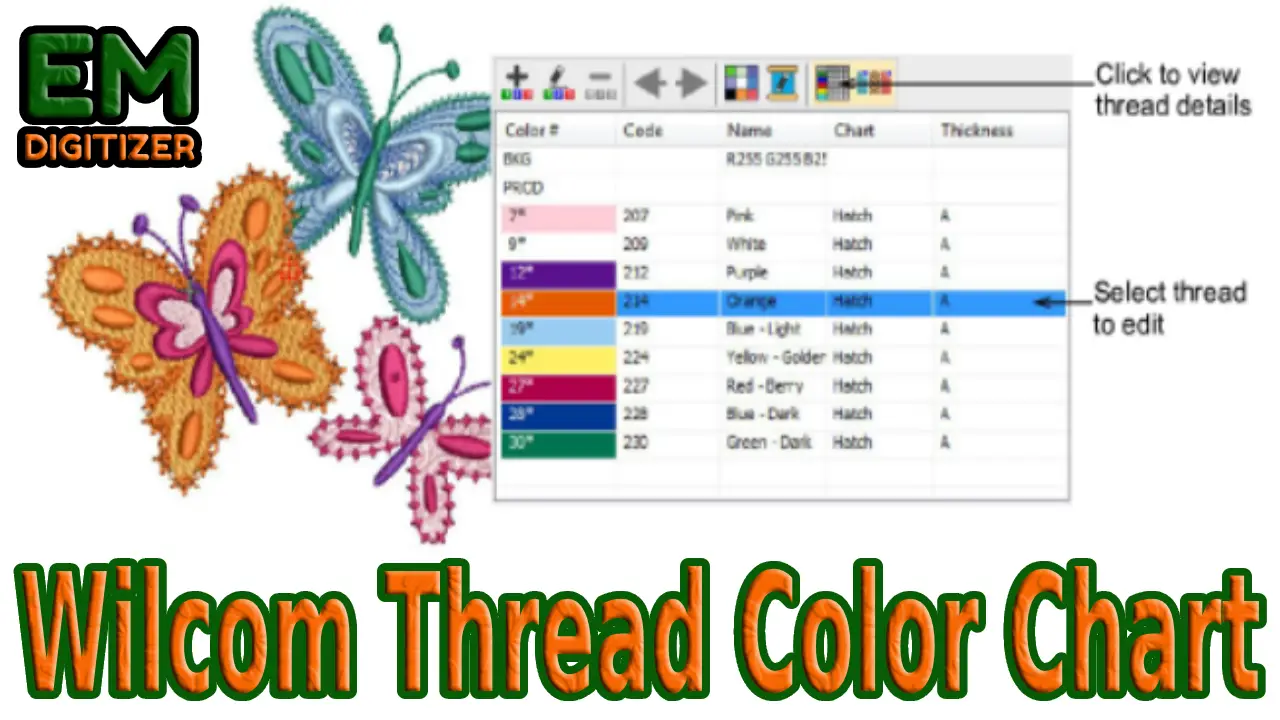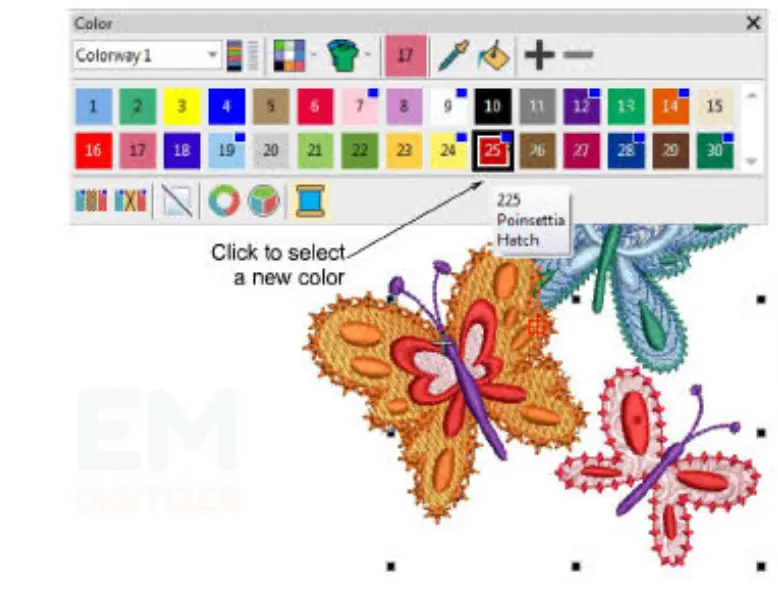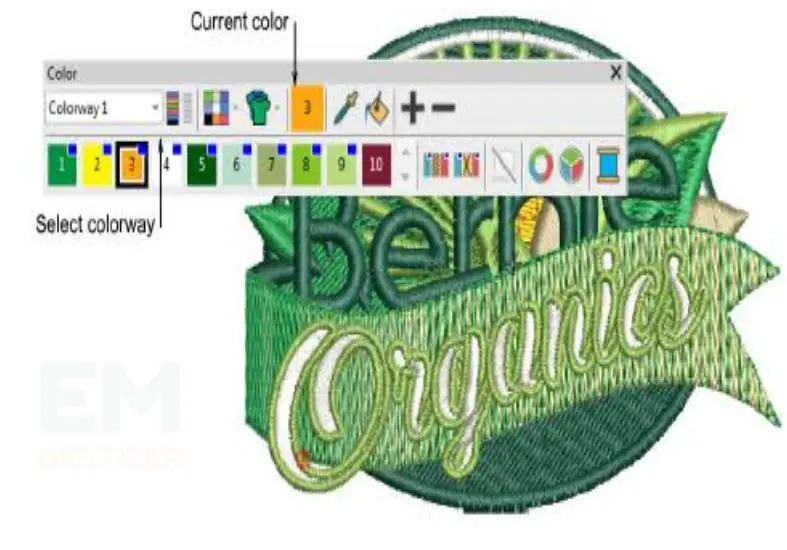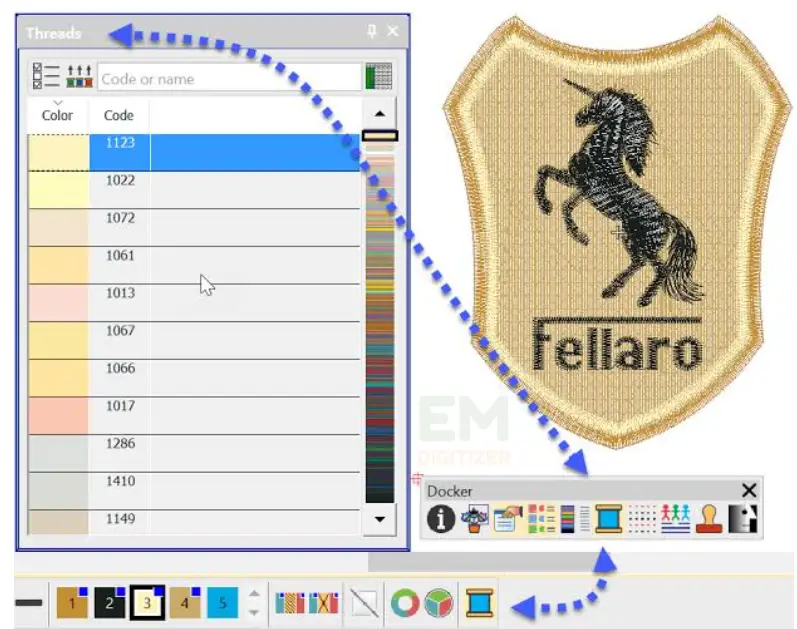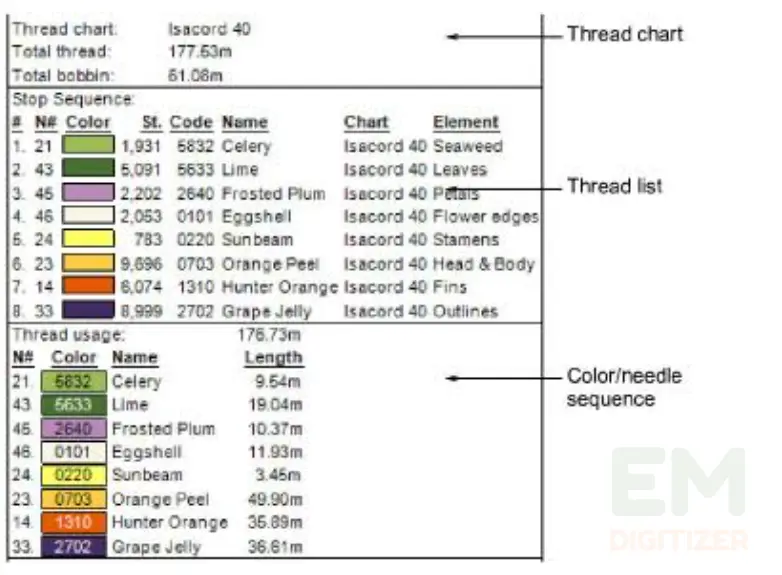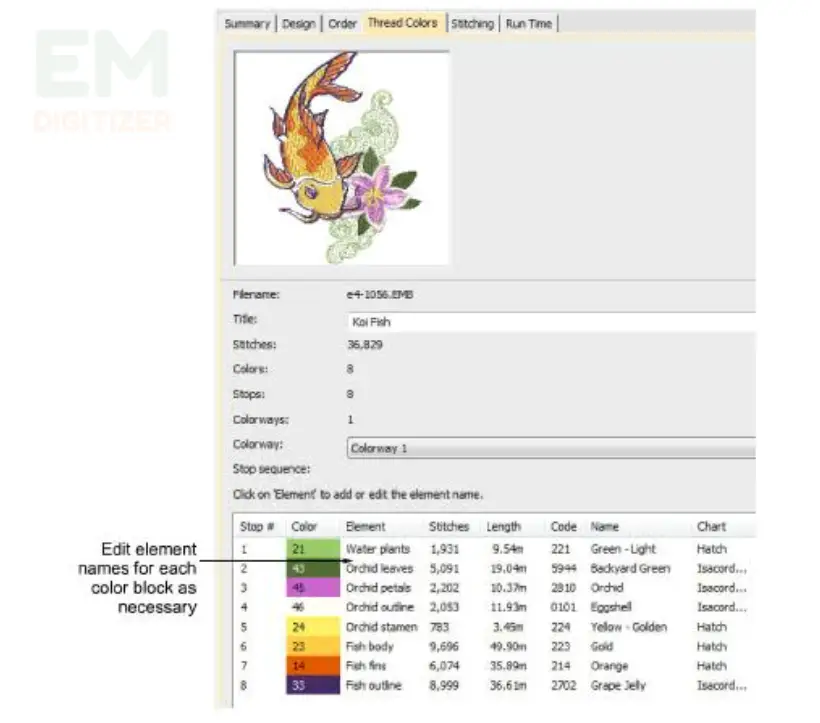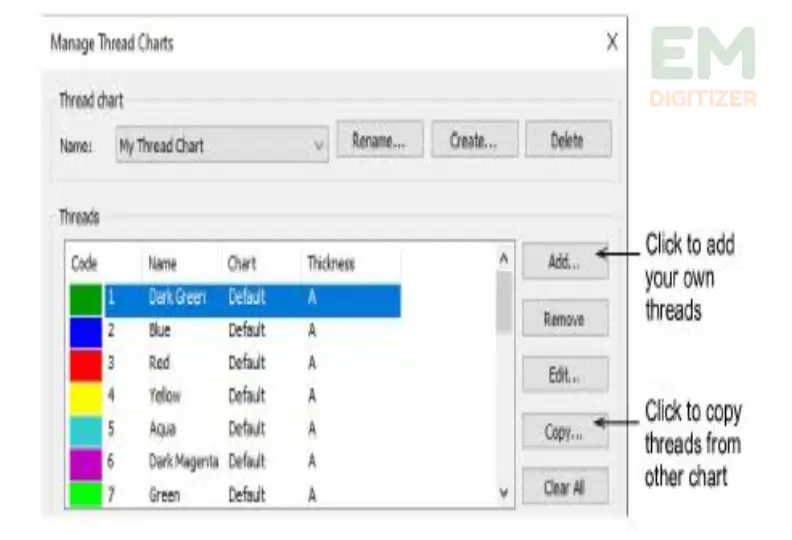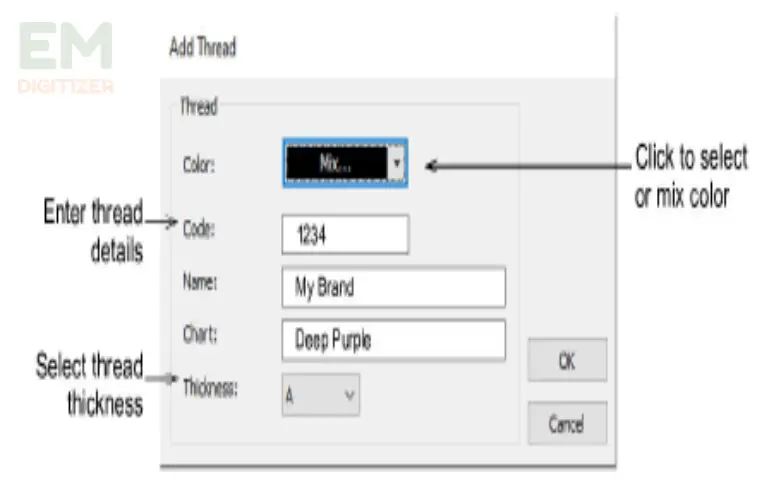Keeping quality in your crafts is crucial if you work in the embroidery industry. Making the appropriate color choices is what elevates your projects to perfection.
Table of Contents
ToggleAs you know, Wilcom is a well-established brand that provides a thread color chart based on individual tastes. It offers the correct methods for deciding colors for various embroidery applications.
This blog is all about giving you details on the function of the Wilcom thread color chart in embroidery. Furthermore, how to carefully pick colors using it step-by-step.
Embroidery Digitizing Services
If you are looking for embroidery digitizing services, EMDigitizer is one of the best embroidery digitizing companies. Providing all types of embroidery digitizing Services. I recommend you try digitizing services.
Order NowGet Free QuoteAbout Wilcom Thread Color Chart:
Being a trusted brand, the Wilcom thread color chart is equipped with a broad spectrum of colors to fit with any design element. It is mainly categorized into various families—this distribution of colors aids in matching and exploring shades for different embroidered patterns.
In addition to experimenting with their integrated shades and thread, you can also add and switch between different colors from other manufacturers. It allows you to manage the thread and define new color schemes.
Let’s review the blog and discover how to apply it to eliminate the hassle of choosing thread and color. As thread is the essence of embroidery and coloration reflects your proficiency in the embroidered industry.
Role In Thread Color Selection For Embroidery:
The pattern with accurately depicted colors in each part reveals a pleasant look. This is where the Wilcom thread color does its role. As the world leads to technology, embroiderers are becoming more conscious about making themed designs.
They are not confined to creating red petals for floral design. Designers can mix and match their ideas in the form of thread color. Your creation shows your taste and will improve your creative abilities to make a masterpiece.
Ultimately, you will master how important it is to be precise and clear in embroidery. You have a wide selection of colors to choose from for themed patterns to branding logos.
Another aspect is consistency in colors. Careful selection of the Wilcom thread chart ensures equal color distribution in each part. It will make your creation look refined and professional as a whole.
Overall, using a Wilcom thread color chart makes you a reliable embroiderer as clients can get quality designs with their intended results. It will help raise your embroidery business too.
Example:
As you can see from this logo, how accurately a designer added a green shade. This is only possible when you are familiar with the right color code from the Wilcom chart.
This familiarity with the code allows it to match and add color in a way so it won’t look mismatched at any angle. That’s why familiarity with the right color selections is important to retain the clear look of your design.
Learn The Basics Of Wilcom Thread Color Chart:
Before stepping forward, look at a brief note on Willcom thread color chart categories:
Arrangement of Color Groups
This chart is sorted into basic color families like reds, blues, greens, etc. You will find every color here with the given code. Learning about these divisions helps focus options for the color scheme you have in mind for the project.
Color Coding And Numerals:
As in the chart, every thread color is given a numeric code. This is a convenient feature to avoid the fear of guessing which thread to choose. So, get the code and match the intended color to fit your pattern.
Color Variations:
This thread chart has a list of thread colors with specific code and length. It is a plus point for you when you are searching for different shades for your project.
Each family has some color variations from light to dark shade for ease. It allows you to apply color contrast techniques to every aspect of your embroidery.
Thread Types:
Other than colors, there is a wide list of thread types mentioned on a Wilcom thread color chart. It includes metallic, rayon, polyester, and other types.
Thus, this list lets you compare each thread type with another brand. You will find Wilcom thread a reliable option to use for any kind of embroidered material.
How To Use Wilcom Thread Color Chart:
This section explains how one can utilize this chart to make the best match for their projects.
Think of Your Project:
Make up your mind about what type of design you want on which material. It could be any floral design on a scarf or you want a logo to showcase your brand. Now consider the colors as per the theme of your company or brand you wish to reveal publically. Exploring thread color and types will be easy when you have outlined these details in mind.
Select The Ideal Colors:
Circle the code and find a precise shade complement using a printed chart. To make the best choice, be sure to thoroughly go over the list. It will assist in saving time by quickly getting the right shade without confusing others.
Compare With Other Charts:
While there is a large selection of colors in the Wilcom thread color chart, you can also make a comparison with other brands such as Madeira or Sulky.
This is to ensure that the final product looks exactly as intended. And the utilization of high-quality thread will contribute to client approval.
Try Different Color Combinations:
When you are using a graphic tool, the Wilcom thread color chart also facilitates color matching with RGB or CMYK indicators. They enable precise thread color adjustment. You’ll end up with the same coloring application for design as in the digit file.
Exciting Update:
You’ll be glad to hear that Wilcom has updated the chart with a new feature! Visit their website and try out their recently released Embroidery Service polyfill chart. It is made with polyester thread and works well with thread thicknesses between 40 and 60.
It is simple to download as a zip file, which you can then add to your library of thread charts. Enjoy experimenting with vibrant hues in your creations.
Conclusion
We hope that this overview will be helpful for you while interacting with different colors and thread types in embroidery projects. Invest your time exploring how it is set up, and then use it by sticking to the guidelines. It also allows you to try other brands’ colors and manage your thread chart collection. Stay tuned for their latest updates to make your sewing adventure more colorful.
Click on “Select thread” from the dropdown menu. Go to the chart and simply search for your intended thread with the specific code. This thread has given a code, its manufacturer details, and its features.
You need to shift color and thread type according to the material and design intricacy. Scroll the chart and pick the colorway editor tool. Here you can simply set your thread color preferences.
This chart has introduced new trends for all embroidery enthusiasts. It not only facilitates thread selection but also offers flexibility in terms of color combinations. The availability of every shade and thread type makes it the best tool for any type of project.
If you have any questions leave the comments or you can visit our social channels for more updates regularly. We provide embroidery digitizing services if you need digitizing services feel free to contact us or email us.

